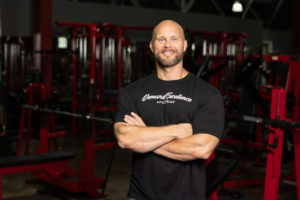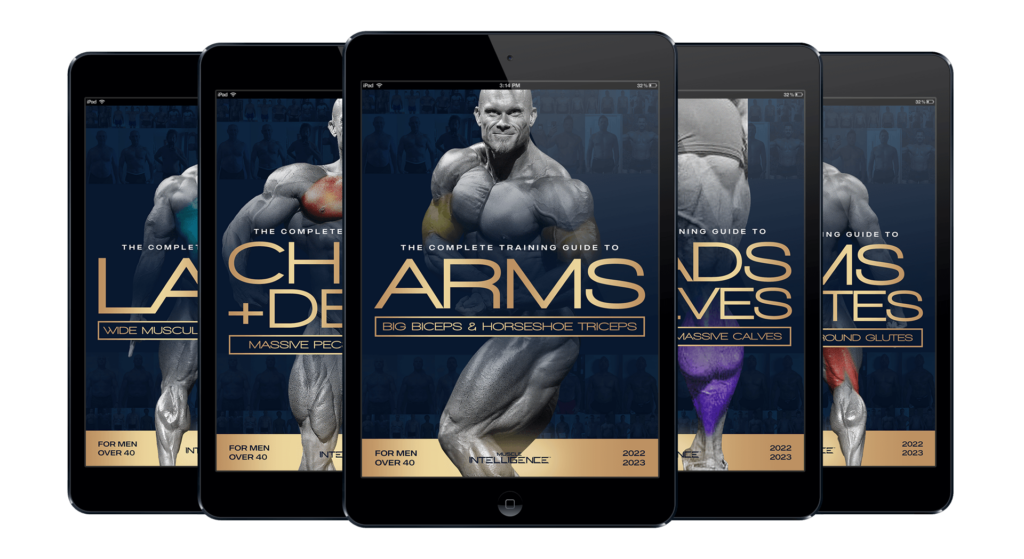This is an excerpt from Muscle Intelligence podcast episode 102 – What is holding you back from your goals? Understanding limiting beliefs with John Assaraf. This excerpt has been edited for clarity.
Ben Pakulski: I simplify [goal achieving] down to three things. It’s set the goal, create the action steps, achieve the goal, right? But I think people get stuck in this process.
One, people don’t set goals. Two, it’s very hard for some people who are disconnected from their body to actually understand the reasons why they need to achieve this goal, or they want to achieve this goal. Do you have any particular guidance?
Jon Assaraf: There’s a huge difference between goal setting and goal achieving, right? Goal setting is an exercise in imagination. It’s an exercise in deductive reasoning, “I want this over that and here’s why.” Goal achieving is really an emotional exercise.
Let me explain what I mean. Let’s say somebody sets a goal. It doesn’t matter if it’s a health goal, a weight goal, a financial goal, a relationship goal, a business goal.
They set the goal. They know why they want to achieve the goal. They may even take some action steps to write down a plan for achieving it. Now what prevents people from actually following through and taking action?
Let’s say that you have a limiting belief that you’re too old, or too young, or too Asian or too Caucasian, or you live in a small town or a big town, or a certain something is in your way. So, even if you have the goal and the plans and the how and the why, if you don’t have the right beliefs, which are part of the emotional brain, the implicit part of the brain, you won’t take action. That’s number one.
Number two, let’s say you have whatever goal you chose and you have one of the 50 known fears that hold people back that actually puts the brakes on behavior. Let’s say you have a fear of being embarrassed, or ashamed, or ridiculed, or judged, or disappointing yourself one more time because you’ve set goals before. The sympathetic nervous system, which is going to shut down motivation, which is going to shut down your motor cortex, so you’re not going to take action. Limiting beliefs will hold you back. Fears would hold you back.
Let’s say that you have a goal and at the emotional implicit part of your brain, your self-image, or self-worth, or your self-esteem doesn’t match up with the goal you want to achieve, your brain will cause you to sabotage any and all behaviors, because your self-image doesn’t match up with the goal that you have.
If you don’t understand how to manage the emotional side of your brain, then guess what happens? You start to develop these habits which are part of your implicit memory system and you are going to develop these habits that line up with your current results, regardless of the goals that you have.
If you don’t understand how to change your self-esteem, if you don’t understand how to recognize that fear is nothing more than a signal and how to control the signal so that you take action anyway, and if you don’t know how to release limiting beliefs, then you’re going to be a victim of all of these emotional attributes of our brain.
BP: I’m so glad you said that. I coach a lot of high-level people around the world and that’s one thing that we run into a lot is this unconscious, deep, embedded lack of desire, or ultimately, they don’t believe that they’re willing to do what’s necessary to follow through.
This concept of neuroplasticity that we all talk about is Dr. Andrew Huberman speaks about, can work really positively in your favor, but can also work really negatively. Because when you’re not succeeding at something and you’re just falling short, or you’re not following through, that’s also creating that neuroplastic habit that gets built into these neural networks like you speak of, and deeper ingrained it gets. How do we start to shift?
JA: Great question. If we step back for just a moment and you ask yourself a question, “When you were born and you had a 100 billion brain cells that really didn’t have many connections, except the ones that you were born with, did you have any empowering or disempowering beliefs?” The answer is no. “Did you have any fears other than a fear of loud noise, which I think is instinctual, versus a fear?” The answer is no.
The question then becomes, “Well, how did I develop these?” The answer is, “Well, I developed these from what my parents told me, my sister or brothers told me, my caregivers told me, what I saw on television, in school with other kids. I developed these through my own experiences.”
All of the input that came into our brain through our physical senses and our intuitive part of our brain formulated these neural networks that got reinforced over time, and then became fixed in the implicit part of our brain. Then they run on automatic in order to conserve energy and to keep us safe and away from danger. The way that our brain works is the patterns that got reinforced get played out automatically, because of the hierarchy of how the brain works. That’s part 1.
Part 2: since we know that the neurons that fire together wire together, is there a way for us to create a new, more empowering neural network or pattern deliberately? Because now we are consciously aware that we can activate the neuroplasticity switch? The answer is of course, we can. Every time we activate the neuroplasticity switch by doing something fun, or by being curious, or by using space repetition and using a variety of our physical senses of hear, seeing, smell, taste and touching, we can create a new neural network.
What if we taught somebody that with awareness, they can deliberately change their own language pattern, which is nothing more than changing some coding in your brain? What if we reinforced it for at least 66 days and hopefully up to a year, every day for a few minutes, would it equivalently do the same thing that would happen if you took a little bit of weight and you started doing bicep curls, or a push-up, or you started doing some sit-ups?
If you were going to do exercise and repeat it to build your muscles, couldn’t you build a neuro-muscle through repetition and through a variety of different exercises, which I call Innercises? The answer is of course, you could. If you did that every day for 365 days, for five minutes or seven minutes, you would develop a new self-image, a new limiting belief. You’d be able to recognize fear as a signal, no different than you recognize a light that pops up on your dash when you’re driving your car and something’s going on with your tire or your hood.
BP: Yeah. I think most of my audience is a highly aware demographic of people. The one thing I find and I’d love to hear your perspective on this is it’s been postulated and maybe proven that 95% of our lives is unconscious and the best of us are conscious at a very small percentage of the time. Any thoughts or processes by which you’ve allowed people to create a higher level of presence, a higher level of conscious awareness in their life?
JA: Absolutely. They say, as you’re correct, 95%, 98% of our thoughts, emotions, feelings, sensations and behaviors are due to habitual patterns that are triggered. Mindfulness training is one of the core principles that has been taught now for many, many years in the East, but it’s come out to the West in probably the last five, six, seven years, and so being aware of your thoughts, emotions, feelings, sensations and behaviors.
One of the things that we teach all of our students is every hour take 60 seconds to check in. “Am I having empowering thoughts? Am I in an empowered physical state? Are my behaviors moving me towards my goals and dreams, or are they moving me away? Am I being productive around my health, wealth, relationships, career, business, etc.?”
If you train yourself to do a check-in every hour, that’s a really good start. If you train yourself every day, you start off with five minutes, then 10, then 15 and 20-minute meditation, so that you can start to experience that you are not your body. You are not your thoughts. You’re not your emotions. You’re not your sensations. You have all of those. In this state of training, then you are able to remove yourself and observe yourself. What I mean by that specifically is this, all of our results, I don’t care what result you look at in your life, it is an effect. Would you agree with that?
The question is what’s causing the behaviors that’s causing the results? Now we know that it’s our beliefs, our emotions, our values and our habits. In a state of observation, now we can say, “Okay. If my behaviors, the ones I’m taking or not taking are causing my results, then focusing on my results is really not where the game is won or lost.” It’s in the process that’s driving the behaviors.
“Can I create new empowering beliefs? Yes. Can I learn to manage my emotions better? Yes. Can I make sure that my beliefs and my values are aligned? Yes. Can I change my habits using the new science of neuroplasticity, so that my habits, the things that I am doing every single day automatically are more aligned with the goals and dreams that I have?” The answer is yes.
All of my clients, everybody who buys any of our programs, whether it’s anything about business, or anything about money, or fear, or weight loss, or procrastination has to agree when they buy our programs that you’re going to at least do this for 100 days. People say, “Well, why 100 days?” The answer is because that’s how long it takes from a proven scientific process to really create a new pattern, a habitual pattern that overrides an old pattern. If you’re not prepared to invest a 100 to elicit change, then I really can’t help you.
Listen to the full podcast episode here, or wherever you listen to podcasts, and pick up a copy of John’s book Innercise.












